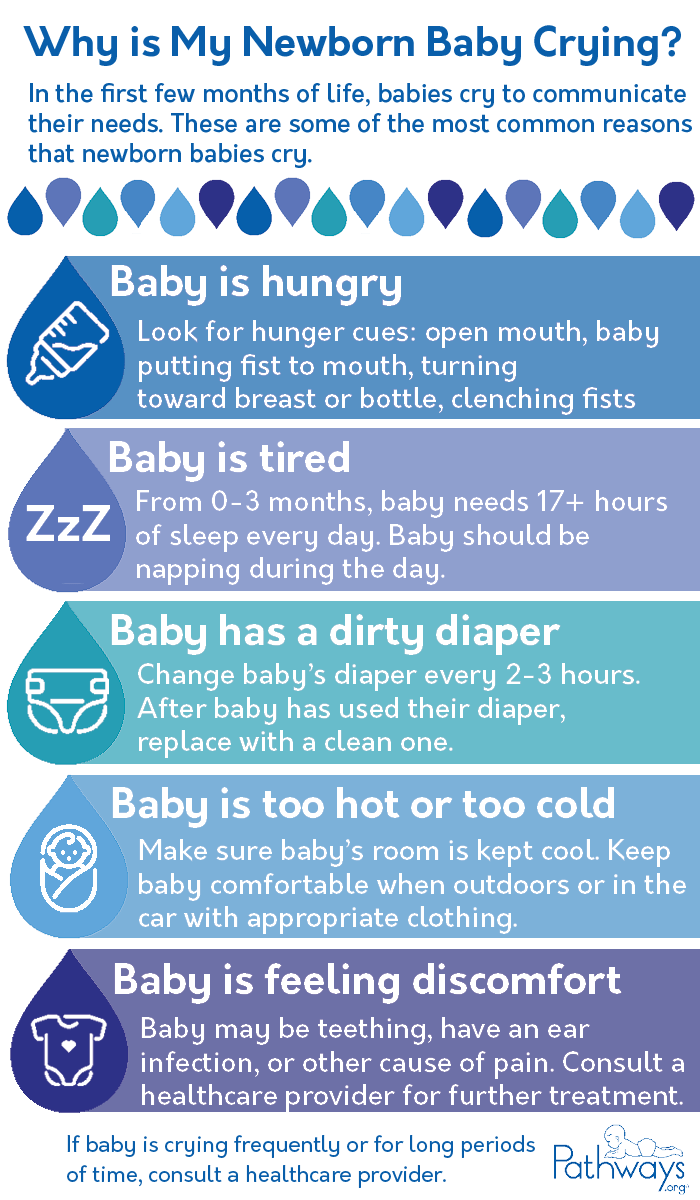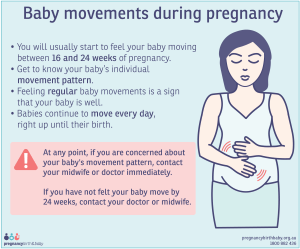A Baby Cries Meaning can indicate hunger, discomfort, fatigue, pain, or the need for attention. Understanding the cause of a baby’s cry can help caregivers respond appropriately and meet the baby’s needs.
It’s important to pay attention to other cues such as body language, facial expressions, and feeding and sleeping patterns to interpret a baby’s cry accurately. By doing so, caregivers can provide the necessary care and support for the baby’s well-being.
Meeting a baby’s needs promptly can also help in establishing a strong and secure bond between the caregiver and the baby. Understanding and responding to a baby’s cry is a crucial aspect of infant care and can contribute to the baby’s overall development and happiness.

The Science Of Baby cries meaning
Baby crying is a complex form of communication that allows infants to express their needs and emotions. Understanding the science behind a baby’s cry can help parents interpret and respond to their baby’s cues more effectively, leading to a stronger parent-child bond.
Causes Of Crying
Babies cry for various reasons, including hunger, discomfort, tiredness, pain, and the need for a diaper change. Environmental stimuli, such as loud noises or bright lights, can also trigger crying. Understanding the specific cause of a baby’s cry can help caregivers address the underlying issue, providing comfort and reassurance to the infant.
Types Of Crying
There are different types of cries that infants exhibit to convey distinct messages. Some common types include hunger cries, pain cries, and tiredness cries. By recognizing the nuanced differences in these cries, caregivers can better understand and respond to their baby’s needs, promoting a sense of security and trust.
Interpreting Baby Cries
Babies communicate with the world around them through crying. As a parent, it is crucial to understand what different cries mean so that you can offer your little one the appropriate care and comfort. In this section, we will explore the various types of baby cries and delve into the signs and signals they convey.
Understanding Different Cries
Understanding the different cries your baby makes can help decipher their needs. Here are some common types of cries and what they may indicate:
- Hunger: A hungry baby cry is typically characterized by short, low-pitched cries with intervals in between. They may also exhibit rooting reflexes and lip-smacking motions.
- Discomfort: If your baby is feeling uncomfortable, their cry may be high-pitched and continuous. They might display signs of distress such as arching their back or squirming.
- Tiredness: When your little one is tired, their cry may sound whiny and accompanied by rubbing their eyes or yawning. They may also appear drowsy and have difficulty staying awake.
- Overstimulation: Overstimulated babies often cry intensely and struggle to settle down. They may turn their head away from stimuli or become fussy when touched or held. Calming techniques like swaddling or providing a quiet environment can help.
- Colic: Colicky cries are typically described as loud, piercing, and inconsolable. They may come in the late afternoon or evening and can last for several hours. If your baby’s cry is accompanied by clenched fists, pulled-up legs, and a tense abdomen, it could be colic.
Signs And Signals
Baby cries are more than just sounds. They are a form of communication that includes non-verbal signals and body language. By observing these signs, you can better understand why your baby is crying. Here are some common signals to look out for:
- Facial Expressions: Pay attention to your baby’s facial expressions, such as furrowed brows, tight lips, or a wide-open mouth. These facial cues can provide valuable insights into their emotional state.
- Body Movements: How your baby moves their body can give you clues about their needs. They might kick their legs when excited, stiffen their body when upset, or cuddle into your chest when seeking comfort.
- Gestures: Babies use gestures to express their wants and needs. They may reach out towards something they want, make grabbing motions, or signal distress by covering their face or eyes.
- Vocalizations: Alongside crying, babies produce other vocalizations that convey specific messages. These could range from cooing and babbling to grunting or groaning, each with its own unique meaning.
- Eye Contact: Babies often make eye contact when they want to engage with you or seek reassurance. Locking eyes with your little one can help establish a connection and make them feel understood and comforted.
Decoding The Meanings
Understanding why a baby cries is like solving a puzzle. Babies communicate through crying, and it is up to us to decipher what they are trying to tell us. By decoding the meanings behind their cries, we can respond to their needs more effectively, helping them feel safe and secure. Let’s explore the different categories of baby cries and what they could signify.
Basic Needs
Babies have basic needs that must be met to ensure their well-being. When they cry, it often means they are trying to communicate one of the following:
- Hunger: Babies cry when they’re hungry. Feed me!
- Discomfort: A wet diaper, a tight onesie, or even feeling too hot or cold can make a baby cry. Something isn’t right.
- Fatigue: Babies cry when they’re tired and need to sleep. I need rest.
- Pain: If a baby is in pain due to colic, teething, ear infections, or any other discomfort, they will cry to alert us. Help me, it hurts.
Emotional States
Babies also cry to express their emotional states. Understanding their emotions can help us provide comfort and reassurance. Here are some common emotional cues that babies might convey through their cries:
- Frustration: When babies can’t get what they want, they may feel frustrated and cry to express their displeasure. I don’t like this.
- Loneliness: Babies crave human connection, and when left alone for too long, they may cry to seek comfort and attention. I need you.
- Anxiety: New environments, unfamiliar faces, or loud noises can make babies feel anxious, leading to tears as a coping mechanism. This is overwhelming.
- Overstimulation: Too much noise, lights, or activity can make babies feel overwhelmed, causing them to cry. I need a break.
As parents, caregivers, or family members, it’s important to be patient and responsive when decoding a baby’s cries. By addressing their needs promptly and with empathy, we can build a strong connection and provide the nurturing environment that babies require for their healthy development.
Parental Responses
Understanding and responding to your baby’s cries is essential for forming a strong bond and meeting their needs. As a parent, it’s crucial to be aware of the various ways to respond to your baby’s cries effectively. Here are some helpful H3 headings and guidance on how to comfort your little one:
Calming Techniques
When your baby is crying, it can be challenging to figure out what they need. Using calming techniques can help soothe your baby and provide comfort. Some effective techniques include:
- Swaddling your baby to provide a sense of security and warmth.
- Using gentle rhythmic movements such as swaying or rocking to create a soothing environment.
- Offering a pacifier or your clean finger for your baby to suck on, which can provide comfort and alleviate distress.
Seeking Help
If your baby’s cries persist and you’re unable to determine the cause, it’s important to seek assistance. This can include:
- Consulting with your pediatrician to rule out any underlying medical issues that may be causing discomfort for your baby.
- Seeking support from a lactation consultant if you are experiencing difficulties with breastfeeding and believe it may be contributing to your baby’s distress.
- Reaching out to friends, family, or a support group for advice and encouragement during challenging times.
Remember, every baby is unique, so finding the most effective way to respond to their cries may require some trial and error. By employing these H3 headings calming techniques and seeking help when needed, you can provide the best care and support for your little one.
Cultural And Developmental Influences
Understanding the meaning behind a baby’s cries is influenced by cultural and developmental factors. Different societies and stages of growth can shape how we interpret and respond to infants’ vocal expressions. Parents should consider these influences when deciphering their baby’s needs and emotions.
Variations In Responses
Babies’ cries can be influenced by cultural and developmental factors, leading to varying responses.
- Cultural Beliefs: Cultural norms often shape how parents interpret and respond to their baby’s cries.
- Developmental Stage: Infants go through different stages of development that can affect the types of cries they produce.
- Social Environment: The social context in which a baby is raised can impact how caregivers perceive and react to crying.
Impact On Growth
The way caregivers respond to a baby’s cries can have a profound impact on their overall growth and development.
- Emotional Development: Responsive caregiving contributes to healthy emotional development in infants.
- Attachment Formation: How parents attend to their baby’s cries can influence the formation of secure attachment bonds.
- Brain Development: Consistent responses to crying support the development of neural pathways related to emotional regulation.
Technology And Analysis
Understanding baby cries meaning has been made easier with the advent of technology and advanced analytical tools. Parents can now rely on digital solutions to decode their baby’s cries accurately.
Apps And Tools, Baby Cries Meaning
Specific apps and tools have been developed to help parents interpret the different types of cries their babies make. These digital resources use sound analysis and algorithms to identify patterns and provide insights.
Research Findings
Studies have shown that these technological innovations have a high accuracy rate in determining the reasons behind a baby’s cry. Research findings support the efficacy of using technology for cry analysis.
Myths Vs. Facts
When it comes to understanding the meaning behind a baby’s cry, there are a lot of misconceptions that can lead to confusion and frustration for new parents. It’s essential to distinguish between myths and facts to ensure the best care for your little one. In this article, let’s delve into debunking common misconceptions and shedding light on evidence-based insights about baby cries.
Common Misconceptions
Let’s dispel some myths that often lead to misunderstanding:
- Babies only cry when they are hungry.
- All cries sound the same.
- Ignoring a crying baby will toughen them up.
Evidence-based Insights
Understanding the facts can help you respond better to your baby’s cries:
- Babies cry for various reasons – hunger, discomfort, pain, fatigue, or overstimulation.
- Each cry has a distinct sound pattern, indicating different needs.
- Responding promptly to a baby’s cry promotes emotional security and fosters trust.
Empowering Parents
Welcome to our blog post on Baby Cries Meaning. As parents, it can be an overwhelming experience trying to understand why our little ones cry. However, by decoding the different meanings behind their cries, you can feel confident in meeting their needs and forming a strong bond with your baby. In this section, we will explore how understanding your baby’s cries can empower you as a parent and help you build confidence in your caregiving abilities.
Building Confidence
Being a new parent can come with a wave of uncertainty. But by learning to decipher your baby’s cries, you can gain a sense of confidence knowing that you are adequately addressing their needs. When you understand that a high-pitched cry typically indicates hunger, you can promptly offer a feeding. If your baby’s cry is accompanied by fussiness or rubbing their eyes, they may be tired and in need of sleep. By responding promptly and appropriately to their cries, you build confidence in being able to meet their basic needs.
Another way understanding your baby’s cries can boost your confidence is by recognizing that crying is their way of communicating. As you become familiar with the different types of cries, such as cries of discomfort or cries of frustration, you can respond more effectively. This knowledge allows you to feel more in tune with your baby’s needs, reinforcing the bond between you.
Bonding With Baby
Baby cries have a profound impact on the parent-infant bond. By responding promptly and correctly to their cries, your baby learns that you are there to provide comfort and meet their needs. This consistent and nurturing interaction fosters a sense of security and trust in the parent-child relationship, promoting a strong bond.
When you understand why your baby is crying, you can provide appropriate soothing techniques. For example, if your little one is crying due to discomfort, such as diaper rash, you can reassure them by changing their diaper and applying a soothing cream. By using the right strategies, you establish a foundation of trust and promote your baby’s emotional well-being.
In conclusion, understanding your baby’s cries is a valuable tool that allows you to empower yourself as a parent. By building confidence and deepening the bond with your little one, you can create a nurturing environment that promotes their growth and development. By consistently meeting their needs and responding to their cries, you can foster a strong and secure attachment, setting the stage for a healthy parent-child relationship.

What Are The 3 Types Of Baby Cries?
The 3 types of baby cries are hunger cry, pain cry, and sleepy cry. Each cry has distinctive cues for parents to interpret.
What Does Colic Cry Sound Like?
The cry of a colicky baby often sounds intense, high-pitched, and inconsolable. It may come in bursts, with the baby arching their back and clenching their fists. If your baby’s cry is different from their normal cry, it could be a sign of colic.
What Does A Baby Teething Cry Sound Like?
A baby teething cry is usually high-pitched and continuous. It may sound whiny, irritable, or fussier than usual.
What Does A Hungry Cry Sound Like?
A hungry cry typically sounds high-pitched and urgent, conveying distress. It is a natural response to express hunger and grab attention.
Conclusion
Understanding your baby’s cries is essential for effective parenting. By tuning into their unique cues, you can provide the care and comfort they need. Learning to distinguish between different cries will enhance your ability to meet your baby’s needs, fostering a strong bond and creating a harmonious environment for both you and your little one. ” baby cries meaning, baby cries meaning “





